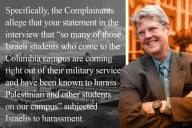You have /5 articles left.
Sign up for a free account or log in.
One of my favorite examples when describing the versatility of social media is to talk about a Swiss multi-tool. With a wide array of accoutrements, the multi-tool is a great way to frame the many uses of social media within student affairs work. Recently, in a post about “The Rise of the Student Affairs Digital Communicator,” I talked about the evolution of student affairs practitioners in terms of social media fluency and use. After reading that particular post, a faculty member in a higher education / student affairs graduate program contacted me and asked what I would include in a social media / digital communications course for student affairs grads. My answer was broad in scope, and like a Swiss multi-tool, the versatility of social media was represented. In no particular order, and by no means complete, here is the list that I quickly typed up and sent in reply:
- Social Data: It's always useful to know some statistics when it comes to learning about social media. I'm a big fan of the Social Media Update from the Pew Research Center.
- Strategic Communications and The Business of Social Media: Digital Communications 101 knowledge, for student affairs work or a business, can be enhanced by checking out these 8 communications resources.
- Digital Accessibility: There is so much work that needs to be done to ramp up the overall state of social media accessibility. I would start with learning how to caption/subtitle YouTube videos.
- Social Media Metrics: What does success mean in the digital realm? Are you looking for likes, followers, engagement, mentions, page views, etc? Note to self, write up a post in the future on social media metrics. For now, try to avoid vanity metrics and definitely visit Matt Hames' posts on LinkedIn for some quality writing on digital data.
- Social Media Sites & Apps: You'll never stop learning in the social media arena. Developers keep iterating/creating and audiences shift over time.
- Digital Professional Development: Connecting with peers, colleagues, mentors, friends, brands, schools, etc. is a wonderful way to keep informed, ask questions, and grow as a professional. My favorite method is the ubiquitous hashtag on Twitter.
- Blogs: I would be remiss if I didn't include blogs in this list. As digital hubs, content repositories, and engagement platforms, blogs are almost as relevant in 2015 as they were more than a decade ago.
- Social Listening: Using social media for engagement is a terrific facet of the various sites/apps that represent the social sphere. However, you can use social media to "listen" for campus themes which can be useful for all sorts of educational initiatives.
- Digital Enrollment Management: Needless to say, strategic enrollment management professionals understand the value of strategic social media communications.
- Career Development / Digital Identity: Working on establishing a digital presence requires thoughtfulness and fluency. This section could probably be an entire course just by itself.
- Digital Advising/Engagement: Learning tips on how to advise and engage via social media seems like an obvious section in an educational landscape that is made up of a variety of learners. For online-only students, social media and digital communications are going to be instrumental in advising, retaining, and supporting individuals who you may never see in-person.
What would you add to this list?
Do you tweet? Let's connect. Follow me on Twitter.








